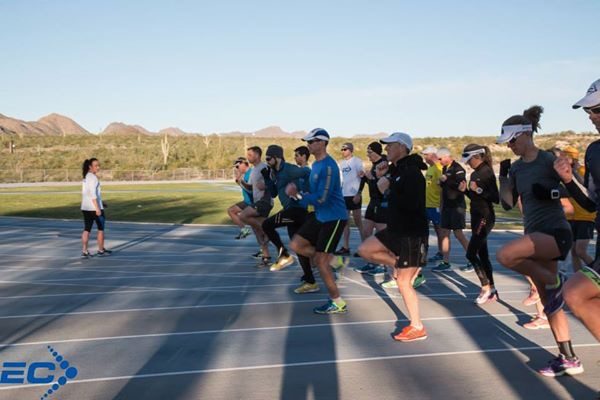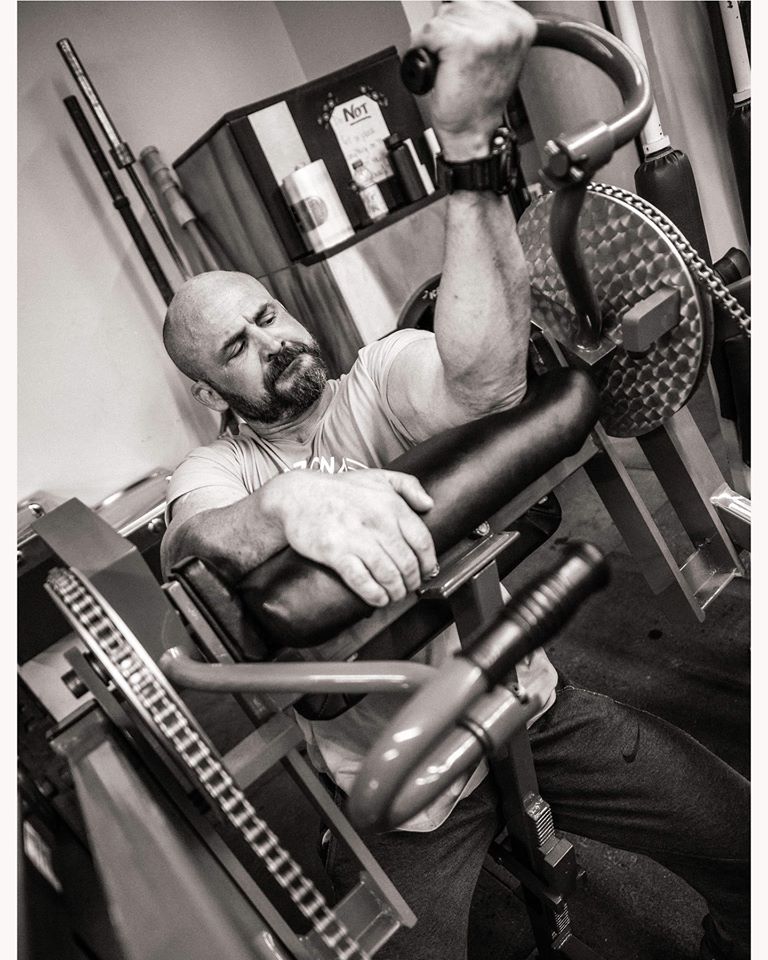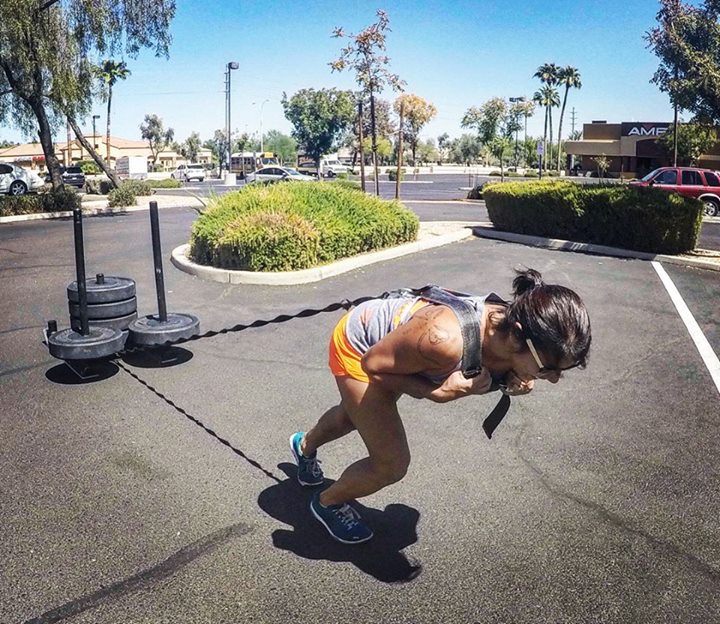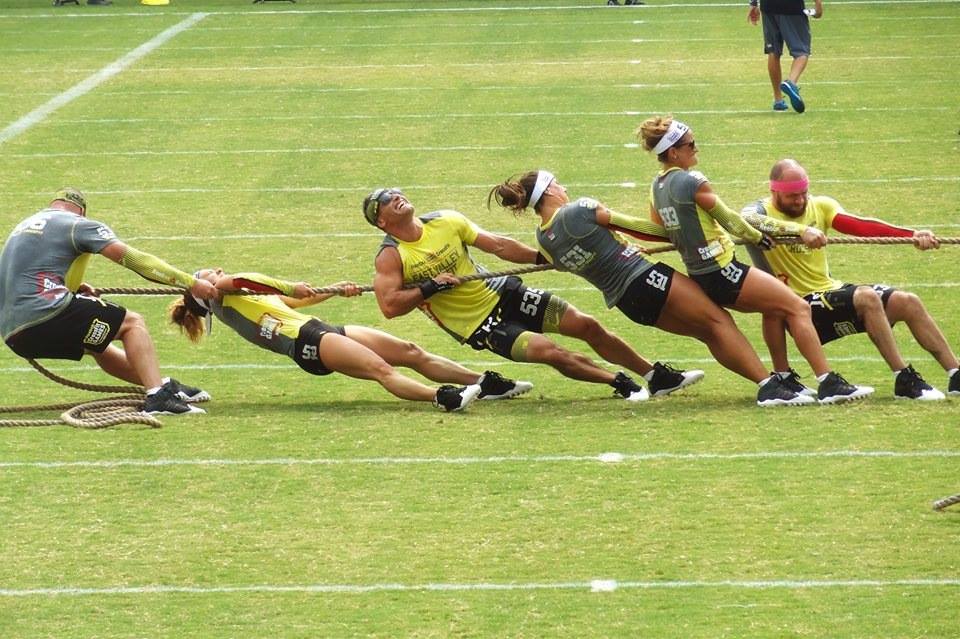In the most basic terms, Hypertrophy refers to an increase in the size of a…

Effective Conditioning for CrossFit Athletes: Effort Measurement and Overview
By Marilyn Chychota
Conditioning is a measure of how well an athlete is able to meet the energy production of their sport. Conditioning is much more than just about “Cardio.” Every sport requires a different combination of power and endurance. Some sports require a great deal of power and little endurance, while others require the exact opposite.
Understanding and training the different energy systems will help you more effectively move towards your performance goals. Having a clear plan in how you train will result in much more effect results than simply throwing spaghetti at a wall and hoping something sticks. My goal is to help you understand and incorporate specific conditioning sessions to become more effective in your training and take things to a higher level.
By making your conditioning specific, you’ll recover better, learn how to execute different workouts better, and have the physical development to do each type of workout at a new level.
Top conditioning results come from finely tuned development of all your energy systems. When even just one system is underdeveloped, your performance is compromised. Conditioning takes time and commitment throughout the entire year. Just working harder is not always the answer. Working smarter and, more specifically, with organization and a purpose, will cause your conditioning to excel.
Why we do conditioning as CF athletes– We do conditioning to be better for the test sets and competition. Think of conditioning training as supplementary training to handle key workouts better, just as you would do squats, accessory lifts and pulls for Olympic lifting.
We wouldn’t go into an Olympic lifting competition and do a clean pull, but we need to do clean pulls in training to be better at competition lifts. Conditioning sessions serve the same purpose for your test and competition efforts.
Multi-wod and multi-day competitions require a great aerobic base to recover from one to the next and still continue to perform at a high level. Wods over 8 minutes long and repetitive wods such as two efforts quickly (one immediately after the other) require good ability to clear lactate and handle working at a high % of your max. This requires a well trained threshold. High intensity wods will require well trained V02.
Names and Definitions:
There are many different terms out there for the same thing. The following are the terms, zones, and definitions I find most valuable and applicable to conditioning for Crossfit athletes.
Recovery- Goal: To speed the recovery process by going at an easy pace at low resistance, low load. Benefits include increasing blood flow to the muscles to help remove muscle soreness, and reducing free radical build-up that causes muscle stress and damage. Studies have shown that active recovery at an appropriate pace leads to faster recovery than complete rest. To do this, heart rate must remain low and load must also be very low. The key to recovery sessions is to do just enough work to engage the active recovery process, but not long or intense enough to induce a training stress upon yourself. This is a workout that you will use during all your training periods. Even though the temptation is there to vegetate on the couch the day following a tough workout, use low-load sessions as an active recovery workout to jumpstart the process of repair and regeneration. The best example of this is a light swim including some kicking, drill and easy swimming or yoga. The most common error is if an athlete uses a run session or gym session as active recovery.
Easy– This is very low-intensity training. Easy training promotes increased oxygen absorption. This can aid injury prevention and recovery. This zone aids in teaching the body to use fat as a fuel source. Effort should be measured as 4/10 on scale or under 50%. No fueling is required in this zone. All warm up and cool down should start here.
Aerobic– This is moderate-intensity training used to maximally develop your ability to generate fat as your main fuel source. This allows for better recovery later in the season and ability to tolerate higher work loads. This is a long term adaptation. A good amount of your training each week and a block throughout your off season should be dedicated to this zone. This zone is 6/10 or can be guided as 60%. You should be able to carry on a complete conversation while training this zone. Very little concentration is required in this zone.
Tempo– This training zone develops the ability of your fast oxidative glycolytic fibers to generate energy aerobically. The upper reaches of this intensity offer many of the adaptations of the “hard” zone without the prolonged recovery between sessions. This session is where you will take your first deep breath and conversation starts to become difficult. Concentration at this effort starts to switch on. Effort is measured at 7/10 or 70-75%.
Threshold– This training zone maximally develops the ability of your fast twitch fibers to generate energy aerobically. It is a powerful zone to improve cardiac stroke volume and V02 Max. This zone improves the athlete’s ability to process lactate. A large portion of an athlete’s training should be spent in this zone. Effort is measured by 8/10 or 80-85%. Good concentration is required in this zone. Breathing is difficult but manageable through developed breathing skill and improved conditioning.
V02 Max training– This training zone maximally develops the ability of your oxygen delivery systems to get oxygen to the working muscle. In this zone, maximal gains on top speed are made. Recovery from this zone takes longest and this training must be placed appropriately within the athlete’s week and in relationship to their main event. There are high speed gains in this zone, but also high risk. Warm-ups and cool-downs are essential. This is 90-100% effort. In other words, effort is maximal.
Absolute Max– This is where the athlete is improving complete top power and speed. Efforts such as max starts highly benefit from this training. Absolute 3-5 seconds power. Max coordination and skill is required.
How to identify them:
There are several different ways to identity these efforts and the markers to be in each zone.
1– The Borg Scale or Perceived Exertion: (1 – 10. 1 being easiest/10 being maximal)
The “Borg Scale for Rating of Perceived Exertion“ is a useful way of checking intensity.
Using the Borg Scale of Perceived Exertion, you can learn to monitor your performance and intensity. This will pace your effort and help you maintain a moderate level of exertion. Learning to use the Borg Scale of Perceived Exertion does not require any special skills or equipment.
While you are exercising, try to estimate how hard you feel the work is. Rate the degree of perceived exertion you feel. Include the total amount of exertion and physical fatigue.
Don’t concern yourself with any one factor such as pain, shortness of breath or how hard the work is. Try to concentrate on your total, inner feeling of exertion. Estimate your exertion as honestly and neutrally as possible. Rate your perception of the exertion using the Borg Scale.
2– H.R training based on max HR and % of max HR: Using the subject’s highest HR achieved during a test set as max HR is one way to determine max, or you can calculate max HR by subtracting your age from 220. For example, a 44 year-old athlete would calculate 220 – 44 = 176. This is not the most accurate way to determine zones, but it can give you an idea of range you are looking for.
NOTE: An athlete should know their max HR and resting HR.
A reduction in heart rate for a given intensity is usually due to an improvement in fitness, but a number of other factors might explain why heart rates can vary for a given intensity:
- Dehydration can increase the heart rate by up to 7.5%
- Heat and humidity can increase the heart rate by 10 beats/minute
- Altitude can increase the heart rate by 10 to 20%, even when acclimated
- Biological variation can mean the heart rate varies from day to day by 2 to 4 beats/minute
3– VO2 testing with gas: This is measuring the maximal amount of oxygen one can take in, distribute, and use. The VO2max test is an assessment of the maximal amount of oxygen an athlete can consume and use. This test will tell us at what heart rate these things occur, so a tailored program can be implemented. Then the athlete can be given personalized HR zones that correlate with different energy systems, and ventilation thresholds. Testing determines ventilation threshold, and the program will identify it for you based off of a commonly used slope prediction.
4– Lactate step testing with a fuel profile: (blood lactate response to exercise) The most important part of the testing results are the blood lactate results. This is how we pinpoint your thresholds, your training zones, evaluate improvements and areas that require work. These thresholds determine how you perform at various types of events. The reason we use lactate to determine your training zones is that lactate has a direct correlation to fatigue. Where you have high levels of lactate, you also have high levels of fatigue. Our goal through training is to lower the lactate level for each power output – that way you are generating more power while producing less fatigue, which makes you faster.
Any one of these ways of measuring your execution of conditioning sets is effective. Choose one that suits your overall needs best, but come into each conditioning set with a clear understanding of what your effort that training session is targeting. Be specific and purposeful in your training sessions.
This 8 week program is designed to work with your Crossfit week program, taking Crossfit wod days and strength days into account in the overall program. This program is best suited for a competitive Crossfit athlete or an athlete looking to improve their conditioning within their overall program. I recommend before including this program into your overall training to be able to complete a 20 minute easy conditioning session 1-2 x / week within your overall Crossfit program.
This program is based on an athlete whose overall program may consist of 2-5 Crossfit wods per week and 2-3 strength sessions per week, depending on the level of athlete and their training needs.


